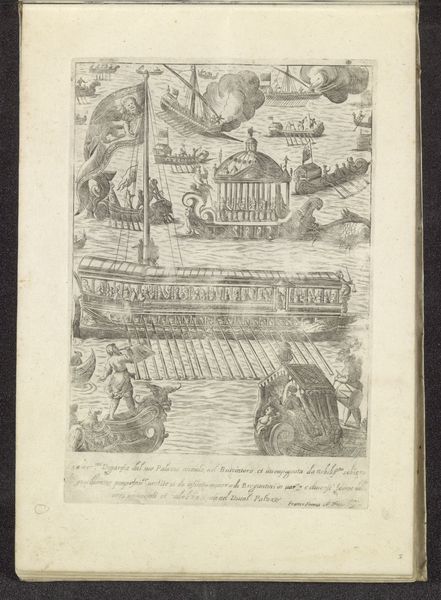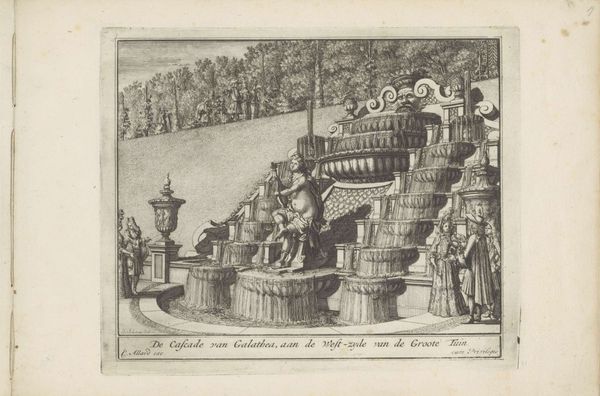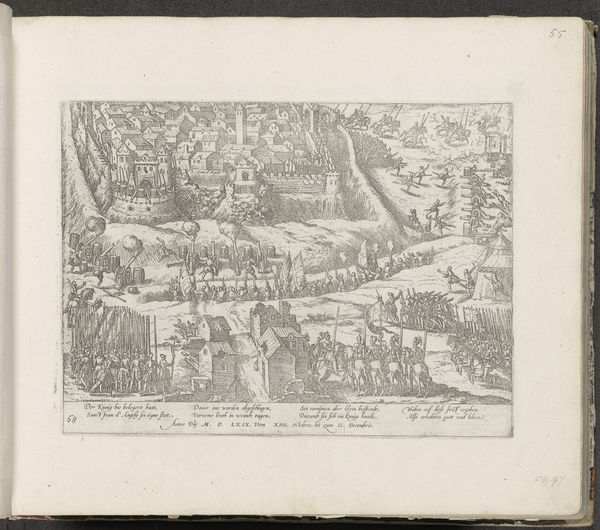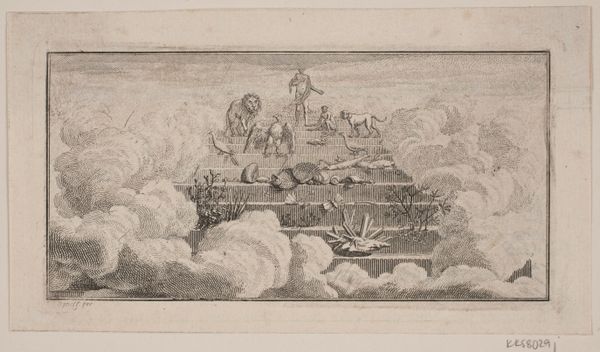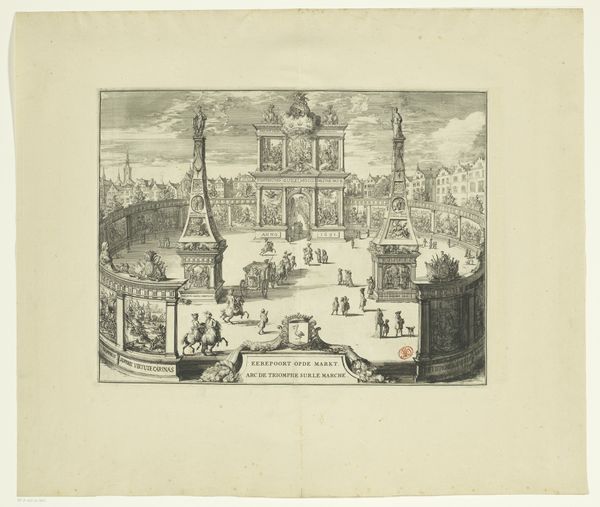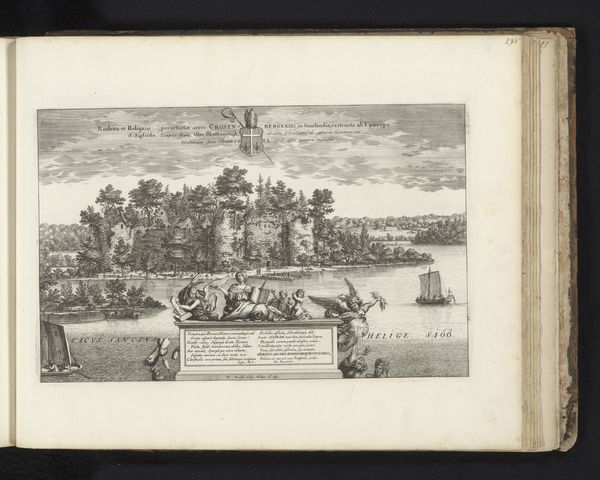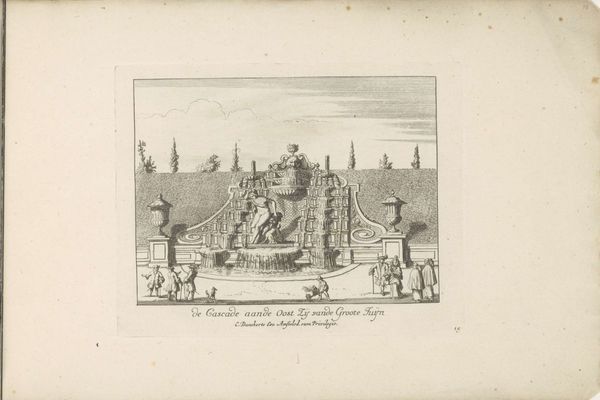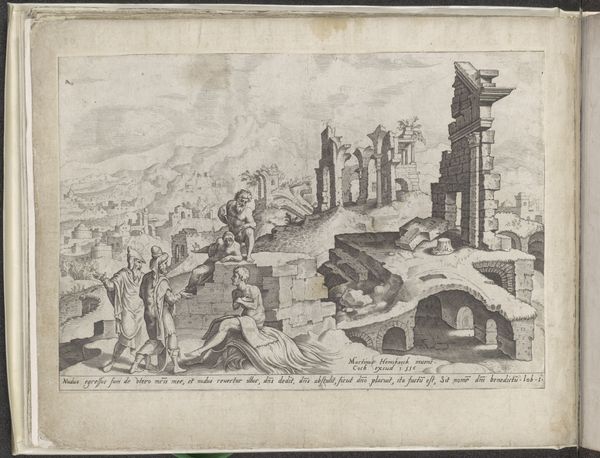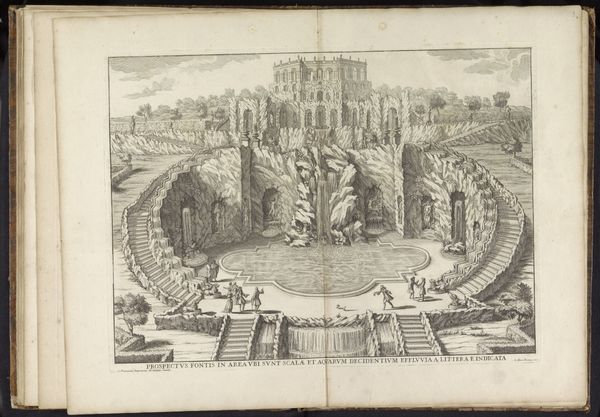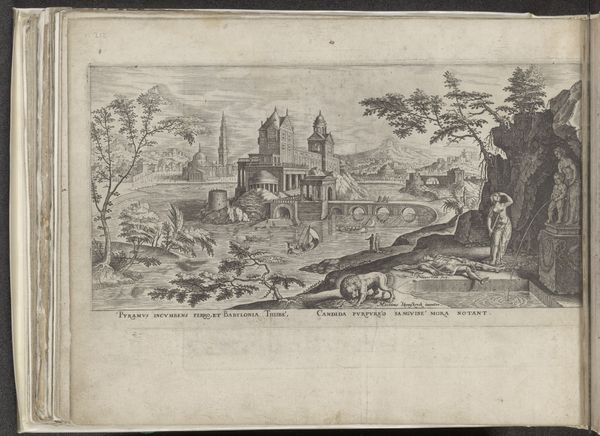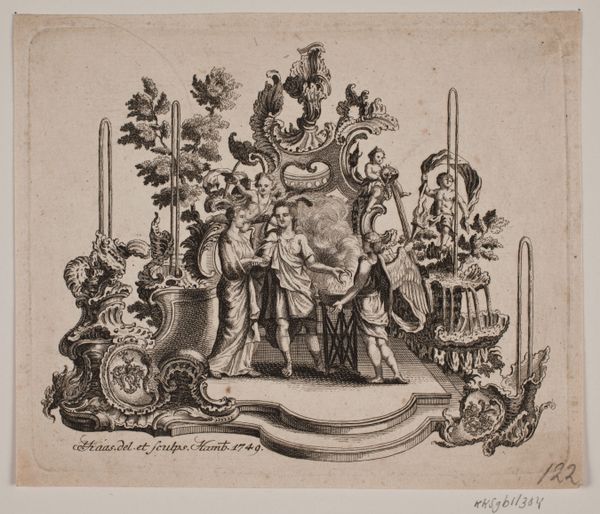
'De Cascade van Galathea, aan de West-zyde van de Groote Tuin', in: Tooneel Der Voornaamste Nederlands Huizen, En Lust Hoven, Naar T Leven Afgebeeld 1660 - 1693
0:00
0:00
drawing, print, etching
#
drawing
#
garden
#
baroque
# print
#
etching
#
landscape
Dimensions: Plate: 6 11/16 × 8 1/8 in. (17 × 20.7 cm)
Copyright: Public Domain
Curator: This is "De Cascade van Galathea, aan de West-zyde van de Groote Tuin," or "The Cascade of Galathea, on the West Side of the Great Garden," a print dating between 1660 and 1693. It’s attributed to Carel Allard, and it gives us a glimpse into the lavish gardens of the Dutch Golden Age. Editor: Wow, what a spectacle! The first thing I notice is how everything seems to cascade, mirroring the water itself. The architecture is playfully integrated with nature. You almost hear the tinkle of the water. Curator: Absolutely. The print offers a vision of baroque ideals intertwined with societal power structures. The cascading fountain becomes a stage for displays of wealth and leisure, reinforcing the patron’s elevated social status. This is a moment in which ideas about social hierarchies become visually translated into landscape design. Editor: I also feel the idealized figures – the nymph Galathea, for example - add another layer. The scene is so carefully arranged that it makes me wonder about the politics of visibility at play. Who has access to such meticulously crafted spaces? Curator: That’s precisely the right question to ask. This garden, rendered in such detail through Allard’s etching, becomes a visual marker of exclusivity. Who gets to see and be seen in this space reinforces existing power dynamics. Further, consider the implications of water, once again, used here as a symbol of abundance, in a world far removed from the working class. Editor: It does feel staged, doesn’t it? All those perfectly posed figures along the tiers of the landscape like ornaments. But perhaps there’s also something poignant in the fleeting nature of such grandeur. Like bubbles, beautiful, transient, and ultimately, a bit hollow. Curator: It's a reminder that even the most deliberately constructed landscapes can become sites of critique when we interrogate their inherent social messages. Editor: Indeed. Now, I see these fountains everywhere – public spaces, private collections, miniature versions sold as kitsch… it feels powerful to track where that originating image landed and wonder what the afterlife of excess will be.
Comments
No comments
Be the first to comment and join the conversation on the ultimate creative platform.

